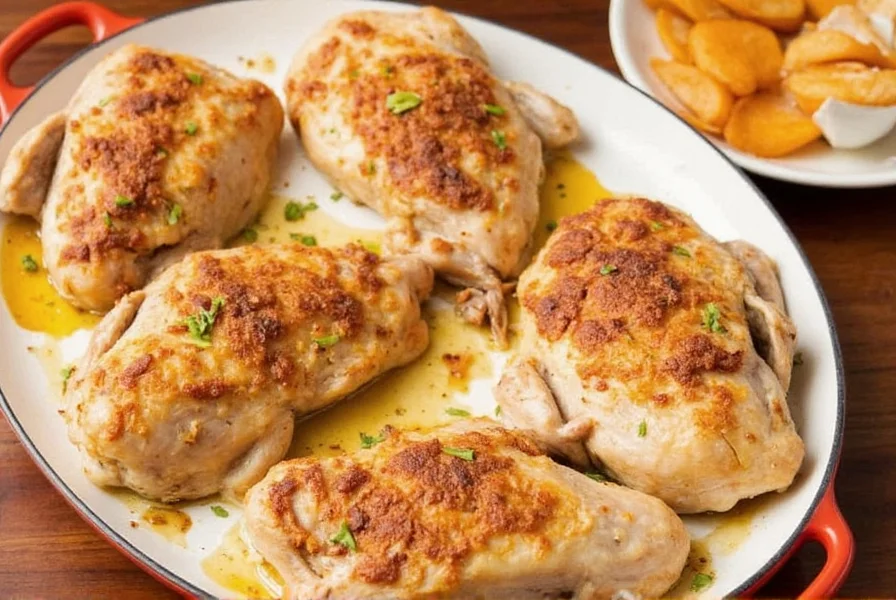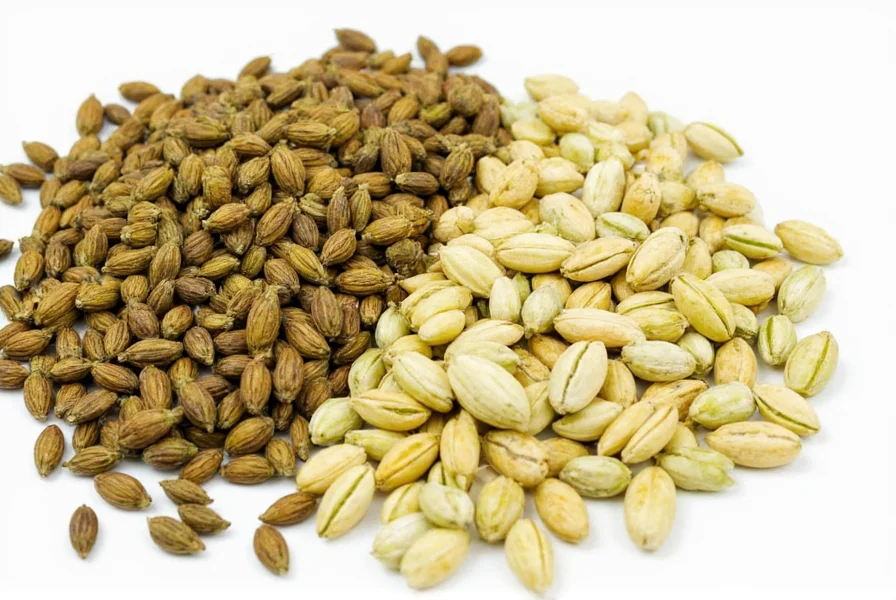Brining chicken is a simple technique to lock in moisture and enhance flavor. Follow these step-by-step instructions to achieve perfectly juicy results every time. This guide covers everything from the basic recipe to expert spice hacks and safety tips.
Table of Contents
- Step-by-Step Brining Instructions
- The Science Behind Brining
- Spice Hacks to Elevate Your Brine
- Smart Spice Storage Tips
- Best Tools for Perfect Brines
- Frequently Asked Questions
- Final Thoughts
Step-by-Step Brining Instructions
Follow this simple process for perfectly brined chicken:

Basic Wet Brine Ingredients:
- 1 gallon water
- 1/2 cup kosher salt
- 1/4 cup brown sugar (optional)
- 1 tablespoon black peppercorns
- 3 garlic cloves, smashed
- 1 lemon, sliced
Instructions:
- In a saucepan, bring 2 cups of water to a boil.
- Add salt, sugar, peppercorns, garlic, and lemon slices.
- Stir until dissolved, then remove from heat.
- Add remaining cold water to cool the brine quickly.
- Submerge chicken in the brine and refrigerate for 8–24 hours.
The Science Behind Brining
Brining works through osmosis and protein denaturation. Salt draws water into the meat while dissolving muscle fibers, resulting in tender, moist chicken with deeper flavor penetration than dry seasoning alone.
| Method | Moisture Retention | Flavor Penetration | Cooking Time |
|---|---|---|---|
| Plain Chicken | Low | Surface Only | Medium |
| Dry Rub Only | Moderate | Shallow | Medium |
| Wet Brine | High | Deep | Longer |
Spice Hacks to Elevate Your Brine
Once you’ve got the basics down, it’s time to have fun with flavors! Here are some creative and effective spice combinations to take your brine to the next level:
Southern Comfort Brine
- Paprika
- Brown sugar
- Garlic powder
- Smoked paprika
- Apple cider vinegar
Asian-Inspired Brine
- Ginger (fresh grated or ground)
- Lemongrass
- Soy sauce
- Star anise
- Honey
Mediterranean Twist Brine
- Oregano
- Rosemary
- Kalamata olives
- Orange zest
- Red wine vinegar
Smart Spice Storage Tips
You’ve invested in high-quality spices—now protect that investment with proper storage. After all, fresh spices = better brines.

How to Store Spices Properly
- Airtight containers: Keep spices away from oxygen to preserve potency.
- Dark, cool spaces: Light and heat degrade flavor over time. A pantry or cupboard works best.
- Label everything: Especially if you mix custom blends for brining.
- Check expiration dates: Ground spices last about 6 months; whole spices can last up to a year.
When to Replace Old Spices
If a spice no longer smells aromatic or takes twice as much to get the same flavor, it’s time to toss it and stock up again.
Best Tools for Perfect Brines
Want to elevate your brining experience? Here are our top picks for tools and products that every brine enthusiast should consider adding to their kitchen arsenal.
| Product Name | Capacity | Material | Pros | Cons |
|---|---|---|---|---|
| Ziplock Big Bags XL | 3 Gallons | Plastic | Easy to use, disposable | Not reusable |
| Anchor Hocking Glass Container | 2 Gallons | Glass | Non-reactive, eco-friendly | Heavy, fragile |
| Yeti Tundra Cooler | 4 Gallons+ | Insulated Plastic | Keeps chicken chilled without fridge | Expensive, bulky |
Recommended Spice Grinders & Mixers
- Cuisinart Spice & Nut Grinder: Small but powerful, ideal for making homemade spice blends.
- OXO Good Grips Measuring Cups: For accurate measurements when mixing your brine solutions.
- Tongs with Clip: Helps submerge chicken in the brine and turn it easily.
Frequently Asked Questions
How long should I brine chicken?
For smaller cuts like breasts or thighs, 4–8 hours is ideal. Whole chickens benefit from 12–24 hours in the brine for maximum flavor and moisture retention. Never exceed 48 hours, as this can make the texture mushy.
Do I need to rinse the chicken after brining?
No! Pat the chicken dry thoroughly and cook immediately. Rinsing washes away surface spices and prevents proper browning. The salt concentration in a properly balanced brine won't make the chicken overly salty after cooking.
Can I reuse brine?
Never reuse a brine that’s contained raw chicken—it creates a serious food safety risk due to potential bacterial contamination. Always discard used brine after a single use.
What’s the difference between wet and dry brine?
Wet brine uses a liquid solution (salt + water + aromatics) for deeper flavor penetration, while dry brine involves rubbing salt and spices directly onto the meat. Wet brines work faster for large cuts, while dry brines create superior skin crispness for roasted chicken.
Can you brine frozen chicken?
Yes, but with adjustments. Place frozen chicken directly in the brine—it will thaw and brine simultaneously. Add 25% more time to the standard brining duration. Never brine frozen chicken at room temperature; always keep it refrigerated.
Does brining make chicken salty?
When properly executed with standard ratios (like 1/2 cup salt per gallon), brining enhances flavor without excessive saltiness. The salt concentration equalizes through diffusion, seasoning the meat evenly rather than making it taste salty. Over-brining (beyond 24 hours) is the main cause of saltiness.
What's the best salt for chicken brine?
Kosher salt is ideal because it dissolves easily and has consistent crystal size. Avoid iodized table salt (can impart metallic notes) and sea salt with anti-caking agents. If using table salt, reduce quantity by 25% since it's denser than kosher salt.
Final Thoughts
Brining transforms ordinary chicken into extraordinary meals. With the right technique, quality ingredients, and proper tools, you'll consistently achieve juicy, flavorful results that impress every time.










 浙公网安备
33010002000092号
浙公网安备
33010002000092号 浙B2-20120091-4
浙B2-20120091-4